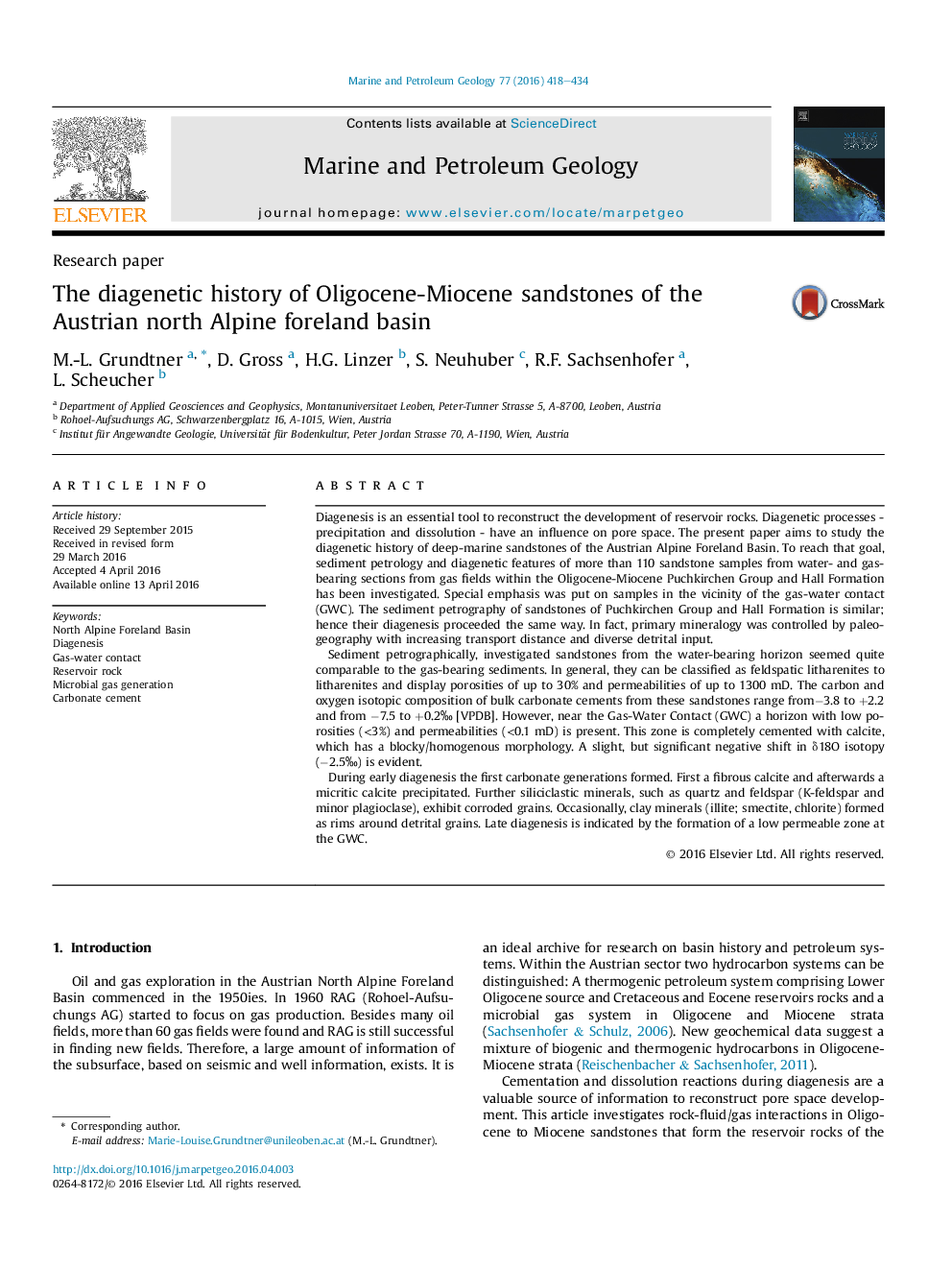| Article ID | Journal | Published Year | Pages | File Type |
|---|---|---|---|---|
| 6434561 | Marine and Petroleum Geology | 2016 | 17 Pages |
â¢Diagenesis of Puchkirchen Group and Hall Formation proceeded the same way.â¢Water-bearing sandstones are diagenetically comparable to gas-bearing zones.â¢Early diagenetic carbonate cementation impeded further compaction.â¢Corrosion of early carbonate account for higher porosity and permeability.â¢A low permeable zone between the water- and gas-bearing horizons developed.
Diagenesis is an essential tool to reconstruct the development of reservoir rocks. Diagenetic processes - precipitation and dissolution - have an influence on pore space. The present paper aims to study the diagenetic history of deep-marine sandstones of the Austrian Alpine Foreland Basin. To reach that goal, sediment petrology and diagenetic features of more than 110 sandstone samples from water- and gas-bearing sections from gas fields within the Oligocene-Miocene Puchkirchen Group and Hall Formation has been investigated. Special emphasis was put on samples in the vicinity of the gas-water contact (GWC). The sediment petrography of sandstones of Puchkirchen Group and Hall Formation is similar; hence their diagenesis proceeded the same way. In fact, primary mineralogy was controlled by paleo-geography with increasing transport distance and diverse detrital input.Sediment petrographically, investigated sandstones from the water-bearing horizon seemed quite comparable to the gas-bearing sediments. In general, they can be classified as feldspatic litharenites to litharenites and display porosities of up to 30% and permeabilities of up to 1300 mD. The carbon and oxygen isotopic composition of bulk carbonate cements from these sandstones range fromâ3.8 to +2.2 and from â7.5 to +0.2â° [VPDB]. However, near the Gas-Water Contact (GWC) a horizon with low porosities (<3%) and permeabilities (<0.1 mD) is present. This zone is completely cemented with calcite, which has a blocky/homogenous morphology. A slight, but significant negative shift in δ18O isotopy (â2.5â°) is evident.During early diagenesis the first carbonate generations formed. First a fibrous calcite and afterwards a micritic calcite precipitated. Further siliciclastic minerals, such as quartz and feldspar (K-feldspar and minor plagioclase), exhibit corroded grains. Occasionally, clay minerals (illite; smectite, chlorite) formed as rims around detrital grains. Late diagenesis is indicated by the formation of a low permeable zone at the GWC.
